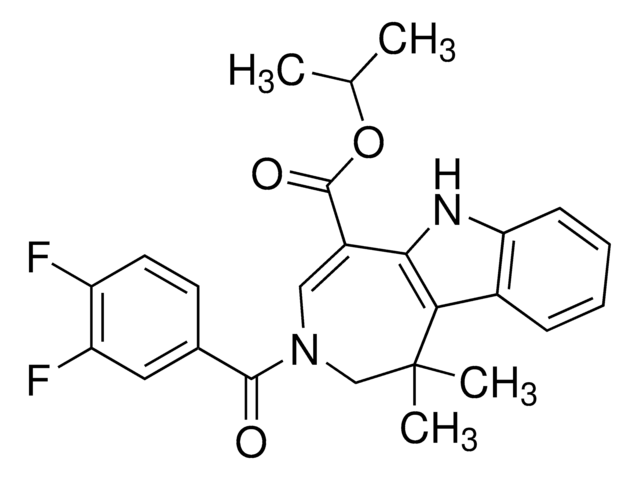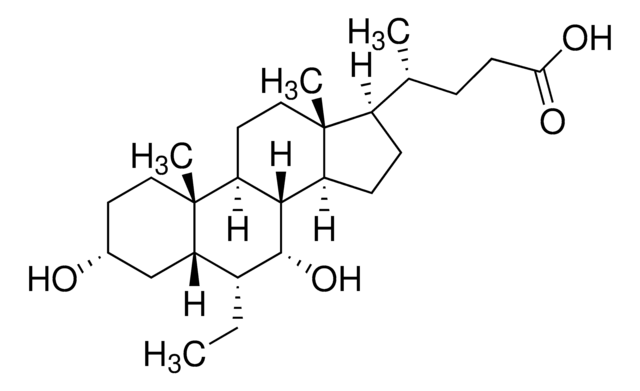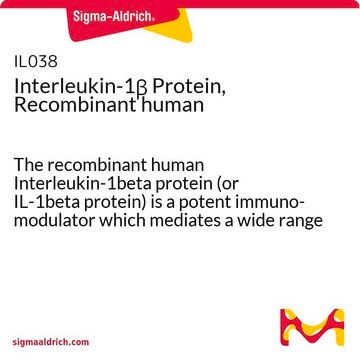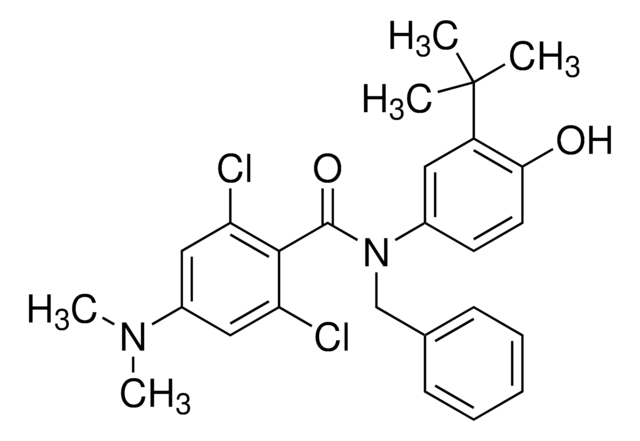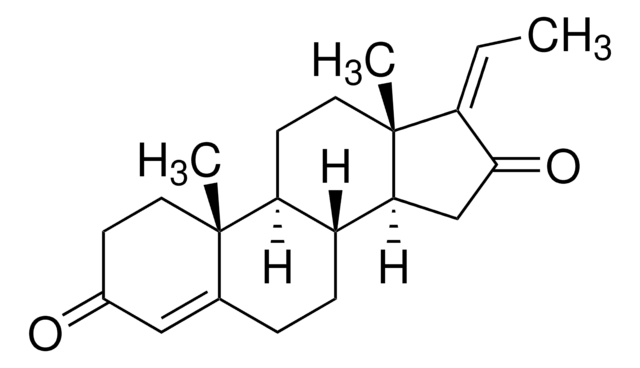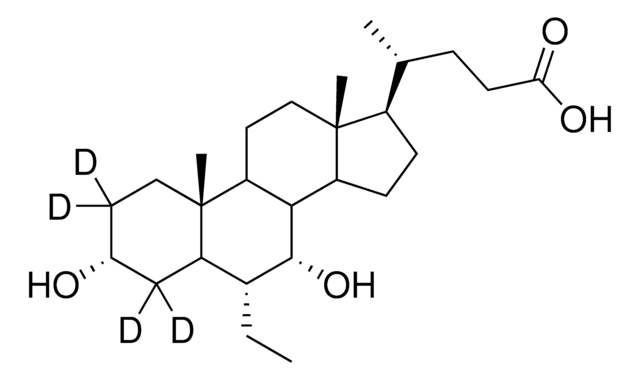G5172
GW4064
≥97% (HPLC)
Synonyme(s) :
3-(2,6-Dichlorophenyl)-4-(3’-carboxy-2-chlorostilben-4-yl)oxymethyl-5-isopropylisoxazole
About This Item
Produits recommandés
Niveau de qualité
Essai
≥97% (HPLC)
Forme
powder
Conditions de stockage
desiccated
Couleur
white
Solubilité
DMSO: 10 mg/mL, clear
Température de stockage
2-8°C
Chaîne SMILES
CC(C)c1onc(c1COc2ccc(\C=C\c3cccc(c3)C(O)=O)c(Cl)c2)-c4c(Cl)cccc4Cl
InChI
1S/C28H22Cl3NO4/c1-16(2)27-21(26(32-36-27)25-22(29)7-4-8-23(25)30)15-35-20-12-11-18(24(31)14-20)10-9-17-5-3-6-19(13-17)28(33)34/h3-14,16H,15H2,1-2H3,(H,33,34)/b10-9+
Clé InChI
BYTNEISLBIENSA-MDZDMXLPSA-N
Description générale
Application
- to investigate its ability to protect the livers of mice from lipopolysaccharide (LPS)-induced inflammation and apoptosis
- to examine its capability to inhibit mucosal injury in ileum caused by lipopolysaccharide (LPS)
- to treat ileal explants
Actions biochimiques/physiologiques
Caractéristiques et avantages
Mention d'avertissement
Warning
Mentions de danger
Conseils de prudence
Classification des risques
Acute Tox. 4 Oral - Aquatic Chronic 4 - Eye Irrit. 2
Code de la classe de stockage
11 - Combustible Solids
Classe de danger pour l'eau (WGK)
WGK 3
Point d'éclair (°F)
Not applicable
Point d'éclair (°C)
Not applicable
Équipement de protection individuelle
dust mask type N95 (US), Eyeshields, Gloves
Faites votre choix parmi les versions les plus récentes :
Certificats d'analyse (COA)
Vous ne trouvez pas la bonne version ?
Si vous avez besoin d'une version particulière, vous pouvez rechercher un certificat spécifique par le numéro de lot.
Déjà en possession de ce produit ?
Retrouvez la documentation relative aux produits que vous avez récemment achetés dans la Bibliothèque de documents.
Les clients ont également consulté
Notre équipe de scientifiques dispose d'une expérience dans tous les secteurs de la recherche, notamment en sciences de la vie, science des matériaux, synthèse chimique, chromatographie, analyse et dans de nombreux autres domaines..
Contacter notre Service technique